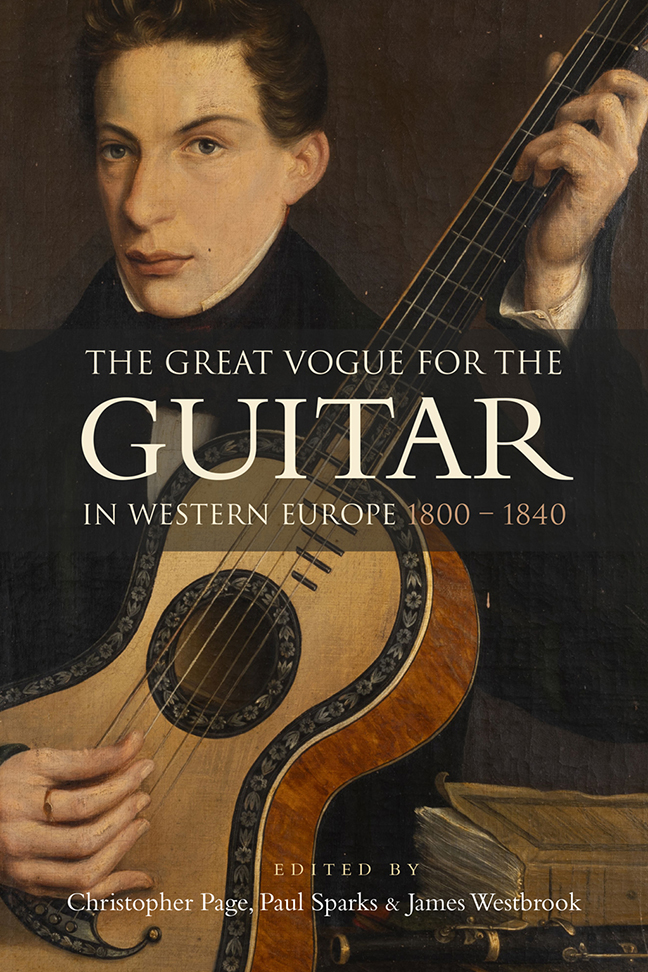Book contents
- Frontmatter
- Dedication
- Contents
- List of Illustrations
- Music examples
- The editors and the contributors
- Foreword
- Acknowledgements
- List of Abbreviations
- Introduction: The Great Vogue for the guitar
- I Contexts
- II The repertoire and its composers
- Appendix: A note on string-making
- Glossary of guitar terms
- Select Bibliography
- Index
Appendix: A note on string-making
Published online by Cambridge University Press: 10 January 2024
- Frontmatter
- Dedication
- Contents
- List of Illustrations
- Music examples
- The editors and the contributors
- Foreword
- Acknowledgements
- List of Abbreviations
- Introduction: The Great Vogue for the guitar
- I Contexts
- II The repertoire and its composers
- Appendix: A note on string-making
- Glossary of guitar terms
- Select Bibliography
- Index
Summary
At the heart of any stringed musical instrument are the strings themselves. String making is an important industry, which has close ties to musical instrument manufacture, to performance practice and to the timbral preferences of musicians. It is difficult, however, to find evidence of string makers of any kind, and, when they appear, they are often referred to generically as ‘musical string makers’, or, with a little more focus on the type of strings, as ‘gut string makers’ or ‘music wire drawers’. Specific allusions to makers of strings for guitars from the period of the Great Vogue are particularly few and far between. Violin and harp strings are mentioned in archival sources far more frequently than guitar strings, and, as Tyler and Sparks point out, guitar methods in the eighteenth century refer to the sizes of violin strings judged appropriate for use on guitars.
Gut is an ideal material for string making, as it is long, strong, flexible and easy to obtain wherever the relevant animals are reared for food. Its flexibility does create challenges for musicians, however, since it stretches and contracts as humidity changes, necessitating that instruments be retuned frequently. In recent decades, string makers and their processes have been researched and rediscovered by various scholars and makers, often focusing on activities in a specific place or period. The production of gut strings is notoriously unpleasant, involving stages from the initial butchery, through cleaning, scraping and steeping in solutions to stretching and twisting, before the final product is ready for sale. As Patrizio Barbieri indicates, in Rome the process included thirteen stages, which (by 1835) were overseen by six types of specialist in a workshop hierarchy supervised by the ‘mastro’. This was an area of work where women tended to be more visible than in other parts of the musical instrument trade, be it as gut scrapers or as business owners, among whom was Johanna Seiler in nineteenth-century London.
As one might expect in an industry that supplies another whose customer base ranges from professional performers to amateur enthusiasts, strings of different quality and therefore cost were available.
- Type
- Chapter
- Information
- The Great Vogue for the Guitar in Western Europe1800-1840, pp. 269 - 271Publisher: Boydell & BrewerPrint publication year: 2023



